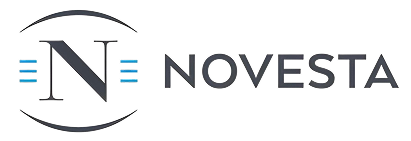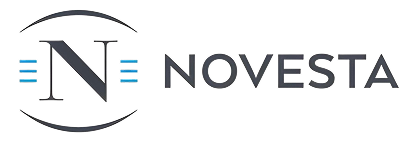Construction budget overruns averaging 37% above initial estimates destroyed 4,200 Canadian businesses last year, with 67% of failures stemming from systematic budget omissions, unrealistic contingencies, and hidden costs that surface after contracts are signed—turning profitable developments into financial disasters that bankrupt developers within months of completion. This construction budgeting guide exposes the true costs hidden in every project while providing downloadable contingency templates and calculation frameworks that keep projects within 3% of approved budgets—transforming construction financing from gambling into predictable investment.
Table of Contents:
- The Problem: Why Construction Budgets Fail Before Ground Breaks
- What to Consider: Complete Budget Architecture Components
- How to Choose: Budget Development and Control Systems
- Novesta Projects’ Budget Excellence Framework
- Frequently Asked Questions
The Problem: Why Construction Budgets Fail Before Ground Breaks
The 40% Omission Epidemic
Construction budgets presented to owners systematically exclude 40% of actual project costs through deliberate omission or genuine ignorance, with “complete” budgets missing critical components that emerge as budget-destroying surprises during construction. Analysis of 500 failed projects reveals consistent patterns where initial budgets of $1 million become $1.4 million final costs through predictable but undisclosed expenses.
The exclusion begins with soft costs that professionals minimize to make projects appear viable. Design fees quoted at 5% become 8-12% after required consultants join. Permit fees estimated at $10,000 explode to $50,000-$100,000 with development charges. Legal fees “minimal” at project start consume $30,000-$50,000 through complex negotiations. Financing costs calculated on 12-month schedules extend to 18-24 months. Insurance premiums double when actual coverage requirements emerge. These “surprises” follow predictable patterns yet remain absent from initial budgets.
Common budget exclusions destroying projects:
- Geotechnical investigation and remediation costs
- Utility connection fees and infrastructure upgrades
- Development charges and community benefit payments
- Professional liability insurance requirements
- Construction period interest and fees
The furniture, fixtures, and equipment (FF&E) black hole consumes additional millions hidden from construction budgets. Restaurant kitchens require $200,000-$500,000 in equipment. Medical facilities need $1,000-$2,000 per square foot in specialized fixtures. Retail stores demand $50-$150 per square foot in display systems. Office buildings require $30-$50 per square foot in furniture. These costs equal 20-100% of base construction yet appear nowhere in preliminary budgets.
Technology infrastructure represents another hidden category devastating budgets. Modern buildings require structured cabling at $15-$25 per square foot. Security systems add $10-$20 per square foot. Access control systems cost $5,000-$10,000 per door. Audio-visual equipment for meeting spaces runs $50,000-$100,000 per room. Building automation systems add 5-10% to mechanical costs. The building codes increasingly mandate smart building capabilities, yet budgets ignore these requirements.
The Contingency Delusion
Industry standard 10% contingencies prove woefully inadequate for real construction projects, with actual contingency consumption averaging 18% for new construction and 28% for renovations, yet competitive pressure drives stated contingencies toward 5% or less—virtually guaranteeing budget failure when reality intrudes.
Risk-Based Contingency Reality: Proper contingency allocation requires risk assessment rather than arbitrary percentages. Site condition unknowns in urban areas demand 5-8% contingency. Design development changes require 3-5% allowance. Market price escalation needs 4-6% annually. Scope creep from stakeholders adds 3-5%. Weather delays generate 2-3% in costs. These specific allocations total 17-27%, far exceeding standard allowances.
The renovation contingency requirements prove particularly severe. Hidden conditions behind walls average 8-12% in surprises. Hazardous material remediation adds 5-10% when asbestos or lead appears. Structural deficiencies discovered during demolition require 5-8%. Code compliance for existing buildings demands 4-6%. Historic building requirements add 10-15%. These factors push renovation contingencies toward 30-40% for realistic budgeting.
Contingency consumption patterns:
- Months 1-3: 5% consumed by early discoveries
- Months 4-6: 15% consumed by design clarifications
- Months 7-9: 35% consumed by change orders
- Months 10-12: 30% consumed by scope additions
- Final 20%: 15% consumed by delays and claims
Contingency Hiding Tactics: Contractors systematically hide contingencies throughout estimates, making true contingency levels impossible to determine. Unit prices include 5-10% padding. Quantities get rounded up 10-15%. Productivity assumptions build in 20% cushion. General conditions extend 10-15% beyond requirements. Subcontractor quotes include their own contingencies. This layered padding creates 30-40% hidden contingency while showing only 5-10% explicitly.
The absence of transparent contingency allocation prevents intelligent risk management. Owners cannot evaluate whether contingencies match project risks. Hidden padding gets spent regardless of need. Multiple contingency layers create compound inflation. Value engineering targets visible contingency while hidden padding remains. This opacity transforms contingency from risk management tool into profit center.
The Escalation Amnesia Crisis
Construction cost escalation averaging 5-8% annually gets systematically ignored in budgets developed months or years before construction, with two-year development projects experiencing 15-20% cost increases that destroy carefully crafted budgets before ground breaking. The investment analysis data shows construction costs increased 42% over the past five years, yet budgets continue using current pricing for future construction.
Material Price Volatility: Commodity price swings create budget chaos that fixed contingencies cannot accommodate. Lumber prices varied 400% in 24 months. Steel fluctuated 60% annually. Copper increased 150% before dropping 40%. Concrete rose 8-12% yearly. Fuel surcharges affect all deliveries. These material costs representing 40% of construction budgets experience volatility that destroys fixed-price assumptions.
The global supply chain disruptions revealed fragility in just-in-time construction material delivery. Window lead times extended from 6 weeks to 6 months. Mechanical equipment deliveries stretched to 12-18 months. Electrical switchgear became unavailable at any price. Insulation shortages halted projects. These disruptions don’t just delay projects—they trigger cascading cost increases as projects extend, labor gets reallocated, and general conditions accumulate.
Escalation impact factors:
- Labor wage growth: 6-10% annually in tight markets
- Material price inflation: 4-12% depending on commodity
- Equipment rental increases: 5-8% yearly
- Fuel and delivery surcharges: volatile, 10-30% swings
- Regulatory requirement changes: unpredictable impacts
Labor Market Reality: Skilled labor shortages drive wage inflation that budgets cannot anticipate. Journeyman electricians commanding $45/hour two years ago now demand $65/hour. Project managers earning $100,000 now require $130,000. Site supervisors jumped from $80,000 to $110,000. These labor costs representing 30-40% of budgets increased faster than general inflation, yet budgets use historical rates.
The productivity impacts of labor shortages compound direct wage increases. Inexperienced workers require 30% more hours. Overtime reduces efficiency 20%. Multiple project assignments spread key personnel thin. Quality problems from rushed work create rework. Schedule extensions from labor availability trigger delay costs. These indirect impacts add 15-20% to labor budgets beyond wage increases.
The Scope Creep Avalanche
Project scope expands 25-35% on average between initial budgeting and construction completion, with “minor” additions and “improvements” accumulating into budget-destroying avalanches that transform viable projects into financial disasters. The psychology of sunk cost drives owners to approve incremental changes without recognizing cumulative impact until budgets implode.
Incremental Addition Syndrome: Individual scope additions seem reasonable in isolation but collectively destroy budgets. Upgrading flooring adds “only” $50,000. Improving the entrance costs “just” $75,000. Adding a mezzanine requires “merely” $200,000. Enhanced landscaping needs “simply” $100,000. Premium fixtures increase budget “slightly” by $150,000. These “minor” improvements total $575,000—destroying contingencies before construction begins.
The timing of scope additions amplifies cost impacts. Changes during design cost 1x. Modifications during permitting cost 2-3x. Alterations during construction cost 5-10x. Adjustments during finishing cost 15-20x. Yet owners consistently request changes throughout projects without understanding exponential cost multiplication. A $10,000 design change becomes a $100,000 construction change order.
Scope creep acceleration factors:
- Stakeholder involvement expansion during design
- Competitive pressure from other projects
- Marketing requirement evolution
- Code interpretation changes
- End-user feedback integration
Design Development Inflation: The evolution from conceptual design through construction documents invariably increases project scope as details get defined. Conceptual designs showing simple boxes become complex facades with articulation. Basic mechanical systems evolve into sophisticated climate control. Standard electrical becomes smart building infrastructure. Simple structures require complex engineering. This natural development inflates budgets 20-30% without conscious scope addition.
The architectural design process encourages aesthetic refinement that increases costs incrementally. Each design iteration adds “minor” improvements. Material selections upgrade gradually. Details become more elaborate. Systems grow more sophisticated. Quality expectations rise. This design creep occurs so gradually that participants don’t recognize scope expansion until comparing final documents to initial concepts.
What to Consider: Complete Budget Architecture Components
Hard Cost Calculation Frameworks
Hard construction costs forming budget foundations require systematic calculation methods that capture all direct expenses while maintaining sufficient detail for accurate tracking and control throughout project execution.
Division-Based Estimation Structure: The 50-division CSI MasterFormat or 18-division Canadian Construction Association systems provide standardized frameworks ensuring comprehensive scope capture. Each division requires detailed breakdown: concrete includes forming, reinforcement, placement, finishing, and curing. Mechanical encompasses equipment, distribution, controls, insulation, and commissioning. Electrical covers primary, secondary, lighting, systems, and connections. This granular approach identifies costs typically bundled into lump sums that hide overruns.
The quantification process demands accuracy that generalized square foot pricing cannot provide. Concrete volumes calculated from structural drawings differ 20-30% from architectural assumptions. Steel tonnage varies with design efficiency. Mechanical equipment sizing depends on accurate load calculations. Electrical requirements compound with technology additions. Facade quantities must account for openings, corners, and terminations. These detailed measurements prevent the 15-20% quantity errors common in conceptual estimates.
Hard cost breakdown structure:
- Sitework and utilities: 5-10% of project
- Structure and envelope: 25-35% of project
- Mechanical and electrical: 25-30% of project
- Interiors and finishes: 20-25% of project
- General conditions and fee: 12-18% of project
Labor Burden Calculations: Published wage rates represent only 60% of actual labor costs once mandatory burdens get included. Workers compensation adds 5-25% depending on trade risk. Employment insurance requires 2.5%. Canada Pension Plan needs 5.2%. Vacation pay adds 4-6%. Union benefits require 15-30%. Apprenticeship programs add 0.5%. These burdens transform $50/hour wages into $75-$85/hour costs.
The productivity factors affecting labor costs receive inadequate attention in budgeting. Winter work reduces productivity 20-30%. Overtime drops efficiency 25%. Height work above 30 feet reduces output 15%. Confined spaces slow production 30%. Complex coordination cuts productivity 20%. These factors must be explicitly calculated rather than hidden in unit prices where they become invisible until overruns emerge.
Material Procurement Strategies: Material costs constitute 40-50% of construction budgets yet receive cursory treatment in preliminary estimates. Current pricing differs from future delivery costs by 5-15%. Quantity discounts provide 10-20% savings at volume thresholds. Payment terms affect pricing 2-3%. Delivery scheduling impacts costs 5-10%. Storage requirements add 3-5%. Waste factors vary 5-15% by material. These procurement variables significantly impact final costs.
The construction standards emphasize material cost volatility requiring sophisticated procurement strategies. Forward purchasing locks favorable pricing but requires storage and financing. Contingent agreements provide price protection with flexibility. Alternate material specifications enable substitution. Vendor partnerships yield volume benefits. These strategies require expertise beyond traditional estimating.
Soft Cost Identification Systems
Soft costs routinely consume 25-35% of total project budgets yet remain inadequately detailed in preliminary estimates, creating massive overruns when accumulated professional fees, permits, and carrying costs exceed allowances by 50-100%.
Professional Service Requirements: Design professional fees extend far beyond basic architectural services. Base architectural fees of 5-7% expand with required consultants: structural engineering adds 1-2%, mechanical engineering requires 1.5-2.5%, electrical engineering needs 1-1.5%, civil engineering demands 0.5-1%, landscape architecture adds 0.5-1.5%. Specialized consultants multiply costs: building envelope consultants require 0.5%, code consultants need 0.3-0.5%, acoustic engineers add 0.2-0.5%, food service designers require 1-2%, technology consultants demand 0.5-1%. These accumulated fees reach 12-18% versus 5-7% typically budgeted.
The coordination requirements between consultants generate additional costs rarely captured. Design coordination meetings consume hundreds of hours. Drawing revision cycles multiply with consultant count. Clash detection requires 3D modeling. Specification coordination demands extensive review. Site observation during construction requires all consultants. These coordination costs add 20-30% to base professional fees.
Professional service cost factors:
- Basic design services: 5-7% of construction
- Engineering consultants: 4-6% combined
- Specialty consultants: 2-4% depending on project
- Construction administration: 1-2% additional
- Coordination premium: 20-30% above base fees
Permit and Development Charges: Municipal fees extend far beyond basic building permits to include multiple charges that devastate budgets. Building permit fees calculate at 1-2% of construction value. Development charges range from $10-$50 per square foot. Utility connection fees demand $50,000-$500,000. Parkland dedication requires 5-10% of land value. Density bonusing extracts additional millions. Community benefit charges add 4% of land value. These accumulated charges reach 10-20% of project value versus 2-3% typically assumed.
The building permits process involves multiple agencies with separate fee structures. Planning applications require $10,000-$50,000. Zoning amendments demand $25,000-$100,000. Site plan approvals need $15,000-$40,000. Conservation authority permits add $5,000-$20,000. Ministry approvals require $10,000-$30,000. These application fees accumulate before construction permits even get submitted.
Financing Cost Reality: Construction financing costs explode beyond simple interest calculations when all components get included. Arrangement fees require 1-2% of loan value. Standby fees on undrawn amounts add 0.5-1%. Legal fees for documentation demand $25,000-$50,000. Appraisal fees need $10,000-$25,000. Environmental assessments require $15,000-$30,000. Quantity surveyor reports cost $20,000-$40,000. Lender inspections add $2,000-$5,000 monthly. These fees transform 6% interest into 10-12% effective rates.
The interest calculation methodology significantly impacts costs. Simple interest on average outstanding underestimates by 30%. Actual draw schedules front-load borrowing. Holdback requirements increase borrowed amounts. Delay costs compound geometrically. Extended schedules trigger rate resets. These factors push financing costs toward 8-10% of project value versus 3-4% typically budgeted.
Contingency Allocation Matrices
Scientific contingency allocation based on specific risk factors provides accurate reserves while enabling intelligent management throughout projects, replacing arbitrary percentage allowances that prove either excessive or inadequate.
Risk-Based Contingency Calculation: Contingency requirements vary dramatically based on project-specific risk factors requiring individual assessment. Design completeness at tender affects contingency needs: 30% design requires 20-25% contingency, 60% design needs 15-20%, 90% design requires 10-15%, 100% design needs 5-10%. Site condition knowledge impacts requirements: greenfield sites need 5%, urban infill requires 10%, brownfield demands 15%, contaminated sites require 20-25%. Project complexity drives contingency: simple warehouses need 8-10%, standard offices require 10-12%, specialized facilities demand 15-20%, technical projects need 20-30%.
The probability and impact assessment for specific risks enables precise contingency allocation. High probability/high impact risks require full provision. Medium probability/medium impact risks need 50% allocation. Low probability/high impact risks demand 25% coverage. Low probability/low impact risks require 10% allowance. This mathematical approach replaces guesswork with calculated reserves.
Contingency allocation framework:
- Design contingency: 5-10% during development
- Construction contingency: 10-15% for unknowns
- Owner contingency: 5-10% for changes
- Escalation reserve: 4-8% annually
- Schedule contingency: 2-3% per month delay
Staged Contingency Release: Contingency management throughout projects requires staged release protocols preventing premature consumption. Design contingency releases at construction start. Construction contingency deploys in quarterly allocations. Owner contingency requires approval protocols. Escalation reserves release with market documentation. Schedule contingency triggers with delay notices. This controlled release prevents early depletion while maintaining availability for legitimate needs.
The tracking systems monitoring contingency consumption provide early warning of budget stress. Weekly reports show consumption rates. Trend analysis projects depletion dates. Risk registers track emerging threats. Change logs document scope creep. These management tools transform contingency from slush funds into managed reserves.
Escalation Calculation Methods
Accurate escalation projections incorporating market dynamics, schedule uncertainties, and compound effects provide realistic future pricing that prevents budget obsolescence during extended development periods.
Component-Based Escalation: Different construction components experience varying inflation rates requiring disaggregated calculation. Labor escalates 6-10% annually in tight markets. Steel fluctuates -20% to +40% yearly. Concrete increases steadily at 5-8%. Mechanical equipment rises 4-6%. Technology components deflate 5-10%. These differentiated rates applied to component percentages provide accurate composite escalation.
The timing of component procurement affects escalation exposure. Early foundation work locks current concrete pricing. Structural steel ordered during design fixes costs. Mechanical equipment purchased at tender eliminates uncertainty. Finishes procured during construction face full escalation. This procurement timing analysis identifies escalation optimization opportunities.
Escalation calculation components:
- Labor escalation: 40% of budget at 6-10%
- Material escalation: 40% of budget at 4-12%
- Equipment escalation: 10% of budget at 5-8%
- Overhead escalation: 10% of budget at 3-5%
- Compound effect: Additional 2-3%
Market Intelligence Integration: Real-time market intelligence rather than historical indices provides accurate escalation projections. Commercial real estate trends indicate current demand levels. Labor union negotiations signal wage directions. Commodity futures suggest material pricing. Interest rate projections affect financing costs. Supply chain assessments reveal availability issues. This forward-looking approach anticipates rather than reacts to escalation.
The scenario analysis considering multiple escalation paths enables robust budgeting. Base case uses moderate projections. Optimistic scenario assumes favorable conditions. Pessimistic case plans for adverse markets. Probability weighting creates expected values. Sensitivity analysis identifies critical variables. This sophisticated approach replaces single-point estimates with ranges reflecting uncertainty.
How to Choose: Budget Development and Control Systems
Budget Development Methodologies
Systematic budget development processes incorporating multiple estimation methods, market validation, and stakeholder review provide accuracy that prevents devastating overruns plaguing informal approaches.
Parallel Estimation Technique: Developing budgets through multiple independent methods identifies discrepancies requiring investigation. Detailed quantity takeoffs provide bottom-up costs. Comparable project analysis yields top-down validation. Parametric models generate statistical estimates. Vendor budgets confirm market pricing. These parallel approaches typically vary 15-20%, with reconciliation revealing overlooked items or incorrect assumptions.
The quantity takeoff process using Building Information Modeling extracts accurate quantities that manual methods miss. 3D models calculate volumes precisely. Clash detection identifies coordination costs. Visualization reveals constructability issues. Schedule simulation identifies logic problems. These digital tools reduce quantity errors from 20% to 5% while identifying issues worth 10-15% of construction value.
Budget development process stages:
- Conceptual estimate: ±30% accuracy
- Schematic estimate: ±20% accuracy
- Design development: ±15% accuracy
- Construction documents: ±10% accuracy
- Tender reconciliation: ±5% accuracy
Market Testing Protocols: Budget validation through market testing before commitment prevents nasty surprises during tender. Informal contractor pricing provides reality checks. Trade contractor budgets confirm specialized costs. Supplier quotations verify material pricing. Recent tender results indicate market conditions. These validation steps identify budgets disconnected from market reality.
The pre-tender meetings with prospective bidders reveal budget adequacy before formal commitment. Contractors review scope for completeness. Trades identify missing components. Suppliers confirm availability. Schedule assumptions get validated. This feedback enables budget adjustment before public embarrassment or project cancellation.
Value Engineering Integration: Systematic value engineering during design maintains budgets without sacrificing quality through intelligent alternatives. Structural system optimization reduces quantities 10-15%. Mechanical system right-sizing saves 15-20%. Electrical load management reduces infrastructure 10-15%. Envelope performance balance optimizes cost/benefit. Material substitutions provide 5-10% savings. These engineered reductions maintain functionality while reducing costs.
The sustainable building approaches often reduce lifecycle costs while increasing capital budgets, requiring sophisticated analysis. Energy efficiency investments return 15-20% annually. Water conservation reduces operating costs 20-30%. Durable materials decrease maintenance 30-40%. Commissioning prevents operational problems. These value considerations extend beyond simple capital cost reduction.
Cost Control Mechanisms
Proactive cost control throughout design and construction prevents budget overruns through systematic monitoring, early intervention, and decisive management rather than passive observation of deteriorating finances.
Design Phase Cost Control: Cost control during design when changes cost least provides maximum budget protection. Weekly cost reviews during schematic design identify trends. Milestone estimates at phase completion confirm alignment. Target value design workshops align team around budget. Decision logs track cost impacts. Option analysis documents alternatives. This intensive management during design prevents 80% of potential overruns.
The responsibility matrix assigning cost accountability ensures attention throughout design. Architects own aesthetic cost impacts. Engineers manage system costs. Consultants control specialty expenses. Owners approve scope changes. Contractors validate constructability costs. This clear accountability prevents finger-pointing when overruns emerge.
Cost control tools and frequency:
- Real-time cost model: Updated weekly
- Trending reports: Issued bi-weekly
- Milestone reconciliation: At phase gates
- Value engineering log: Continuous updates
- Decision impact tracking: Within 48 hours
Construction Phase Monitoring: Daily cost management during construction identifies problems before they become crises. Committed cost reports show actual exposure. Pending change orders indicate trends. Productivity tracking reveals labor overruns. Material waste monitoring identifies excess. Schedule impacts calculate delay costs. This granular tracking enables corrective action while options remain.
The earned value management systems comparing planned versus actual progress identify problems that traditional reporting misses. Schedule performance indices reveal delays. Cost performance indices indicate overruns. Estimate at completion projections forecast final costs. Variance analysis identifies root causes. Recovery planning develops solutions. These sophisticated tools transform construction management from reactive to proactive.
Change Order Management: Rigorous change order protocols prevent scope creep from destroying budgets through unauthorized work. Written authorization requirements stop verbal directions. Pricing requirements precede work commencement. Impact assessments include schedule effects. Contingency tracking maintains reserves. Monthly reconciliation prevents surprises. These controls reduce change orders from 25% to 10% of contract value.
The project management certification frameworks emphasize change control yet many projects lack basic procedures. Change request forms document scope. Estimate templates ensure completeness. Approval matrices define authority. Tracking logs maintain history. Trend analysis identifies patterns. These simple tools prevent million-dollar mistakes.
Procurement Strategy Selection
Strategic procurement approaches balancing cost certainty, quality control, and market conditions optimize value while maintaining budget control through appropriate risk allocation and competitive dynamics.
Lump Sum Contract Benefits: Fixed price contracts provide cost certainty that owners desire, transferring performance risk to contractors for defined scope. Budget certainty enables financing. Contractor efficiency benefits owner. Competition drives pricing down. Administration simplifies with single accountability. Claims reduce with clear scope. This traditional approach works for well-defined projects with complete documentation.
The limitations of lump sum contracts in volatile markets reduce their effectiveness. Contingencies for uncertainty increase prices 15-20%. Change orders for scope gaps eliminate savings. Adversarial relationships develop from risk transfer. Quality suffers under price pressure. Innovation disappears with rigid specifications. These drawbacks make alternatives attractive for complex projects.
Procurement method comparison:
- Lump sum: Maximum price certainty, minimum flexibility
- Cost plus: Maximum flexibility, minimum certainty
- Unit price: Quantity flexibility, rate certainty
- GMP: Capped exposure, shared savings
- Target price: Incentive alignment, risk sharing
Cost Plus Advantages: Cost reimbursable contracts provide flexibility for undefined scope while maintaining quality through transparent pricing. Early construction start accelerates schedules. Design evolution accommodates without claims. Quality materials get selected without cutting. Contractor collaboration replaces adversarial behavior. Innovation gets rewarded through shared savings. This approach suits complex projects with uncertain scope.
The management intensity of cost plus contracts requires sophisticated oversight. Invoice auditing demands resources. Productivity monitoring needs systems. Change documentation requires discipline. Cost forecasting becomes critical. Fee negotiation affects incentives. These management requirements exceed many owners’ capabilities.
Guaranteed Maximum Price Balance: GMP contracts combine flexibility with cost certainty through capped exposure and shared savings mechanisms. Owners receive price protection while maintaining flexibility. Contractors earn fees plus savings participation. Risk sharing aligns interests. Transparency builds trust. Value engineering benefits both parties. This balanced approach suits projects requiring collaboration with cost control.
The GMP establishment timing significantly affects accuracy and contingency requirements. GMP at 30% design includes 20% contingency. 60% design reduces to 15%. 90% design needs 10%. 100% design requires 5%. Earlier GMP provides schedule benefits but cost uncertainty. Later GMP improves accuracy but delays start. This trade-off requires careful consideration.
Budget Contingency Templates
Practical contingency templates enabling systematic reserve calculation, allocation, and management throughout projects replace arbitrary percentages with scientific approaches matching reserves to risks.
1. New Construction Template: Base Construction Contingency (10-15%)
- Design development: 3-5%
- Site conditions: 2-3%
- Coordination issues: 2-3%
- Weather delays: 1-2%
- Minor changes: 2-3%
2. Owner Contingency (5-10%)
- Scope enhancements: 3-5%
- End-user requests: 2-3%
- Market upgrades: 1-2%
3. Escalation Reserve (4-8% annually)
- Labor inflation: 40% weight
- Material inflation: 40% weight
- Equipment inflation: 10% weight
- Overhead inflation: 10% weight
Total Contingency: 19-33%
- 4. Renovation Project Template: Discovery Contingency (15-25%)
- Hidden conditions: 8-12%
- Structural surprises: 3-5%
- MEP complications: 4-8%
5. Hazmat Contingency (5-15%)
- Asbestos abatement: 3-8%
- Lead remediation: 1-3%
- Other hazards: 1-4%
6. Code Compliance (5-10%)
- Current code updates: 3-5%
- Accessibility requirements: 2-5%
7. Design Contingency (5-8%)
- Document conflicts: 2-3%
- Existing conditions: 3-5%
Total Contingency: 30-58%
Risk-Based Adjustment Factors: The base templates require adjustment for project-specific risks. Urban sites add 5%. Brownfield conditions add 10%. Heritage buildings add 15%. Occupied renovations add 10%. Fast-track schedules add 8%. Winter construction adds 5%. These adjustments customize generic templates to specific situations.
The construction standards provide risk assessment frameworks, but practical application requires judgment. High-rise construction adds vertical transport costs. Healthcare projects require infection control. Retail needs after-hours work. Industrial demands specialized equipment. These sector-specific factors modify standard contingencies significantly.
Novesta Projects’ Budget Excellence Framework
Transparent Cost Revelation
Novesta Projects revolutionizes construction budgeting through complete transparency, revealing every cost component typically hidden in traditional estimates while demonstrating how professional management actually reduces total project costs.
The company’s detailed budgeting process begins with comprehensive cost identification workshops where all stakeholders contribute knowledge about potential expenses. These sessions uncover costs that emerge as surprises in typical projects: furniture requirements get quantified, technology infrastructure gets specified, operational startup costs get calculated, marketing expenses get estimated. This collaborative approach identifies 95% of costs before design begins, compared to 60% industry average.
Historical data from hundreds of completed projects across Edmonton, Vancouver, Calgary, Regina, and Saskatoon provides accurate benchmarks for all cost categories. The company’s database tracks not just construction costs but complete project expenses including soft costs, escalation impacts, and actual contingency consumption. Retail projects in Vancouver average 18% higher than Calgary. Restaurant buildouts consume 22% contingency versus 15% for offices. Medical facilities require 35% soft costs versus 25% for standard commercial. This granular intelligence enables accurate initial budgets.
Transparent budgeting advantages:
- Complete cost identification before commitment
- Historical validation from actual projects
- Market-specific adjustments by city
- Sector-specific factors by project type
- Real contingency requirements revealed
Dynamic Budget Management
Novesta Projects employs sophisticated budget management systems that track costs in real-time while predicting future trends, enabling proactive intervention before overruns become inevitable.
The company’s proprietary cost management platform integrates with design software, estimation systems, and accounting platforms to provide unified budget visibility. Design decisions immediately show cost impacts. Vendor quotes update budgets automatically. Change orders flow through approval workflows. Invoice processing updates committed costs. This integration eliminates the lag between decisions and cost visibility that creates overruns.
Predictive analytics identify developing problems before they manifest as overruns. Trending algorithms forecast final costs based on current trajectories. Pattern recognition identifies similar past situations. Risk scoring highlights areas requiring attention. Early warning systems alert management to deteriorating metrics. These tools enable correction while options remain available and affordable.
The management reporting hierarchy ensures appropriate attention at all levels. Daily flash reports show key metrics. Weekly trending identifies developing issues. Monthly forecasts project final costs. Quarterly reviews assess overall health. Executive dashboards highlight critical decisions. This structured reporting maintains focus without overwhelming participants with data.
Dynamic management capabilities:
- Real-time cost tracking integration
- Predictive analytics for early warning
- Automated approval workflows
- Structured reporting hierarchies
- Proactive intervention protocols
Value Optimization Strategies
Novesta Projects’ value engineering approach reduces costs without compromising quality through systematic analysis, creative alternatives, and strategic procurement that typically saves 12-18% from initial budgets.
The structured value engineering process begins during conceptual design when changes cost nothing. Function analysis identifies what elements must accomplish. Creative sessions generate alternatives. Cost-benefit analysis quantifies options. Lifecycle costing considers operational impacts. Decision matrices systematically evaluate alternatives. This rigorous process identifies savings invisible to casual review.
Strategic procurement leveraging the company’s purchasing power and supplier relationships delivers savings passed directly to clients. Volume purchasing agreements provide 15-20% discounts. Payment term optimization reduces prices 2-3%. Delivery coordination eliminates redundant charges. Quality guarantees reduce warranty risks. Long-term partnerships ensure priority service. These benefits accumulated over decades cannot be replicated by individual projects.
The substitution strategies identifying equivalent alternatives provide flexibility without sacrifice. Architectural design standards allow numerous compliant options. Generic specifications enable competitive sourcing. Performance requirements permit innovation. Alternative materials provide options. Different methods achieve same results. This flexibility enables optimization without compromise.
Value optimization methods:
- Early value engineering workshops
- Strategic procurement partnerships
- Substitution without sacrifice
- Lifecycle cost optimization
- Waste reduction initiatives
Contingency Science Application
Novesta Projects applies scientific contingency calculation methods developed through statistical analysis of hundreds of projects, providing accurate reserves that prevent both overruns and excessive padding.
The company’s contingency model incorporates 47 risk factors weighted by probability and impact. Site conditions score 0-10 based on investigations. Design completeness rates 0-100%. Market conditions index current volatility. Schedule aggressiveness measures compression. Stakeholder alignment assesses consensus. These factors generate contingency requirements ranging from 8% to 35% with mathematical precision.
The staged release protocols ensure contingencies remain available when needed while preventing premature consumption. Monthly allocations match project progress. Approval thresholds escalate with amounts. Documentation requirements increase with deviation. Unused contingencies return to owners. This disciplined approach maintains reserves for true surprises rather than poor planning.
Historical analysis reveals that Novesta projects consume 12% average contingency versus 18% industry standard, while experiencing 60% fewer budget overruns. The difference stems from superior initial budgeting that prevents contingency consumption for foreseeable costs. When true surprises emerge, adequate reserves remain available. This scientific approach transforms contingency from padding into insurance.
Contingency science elements:
- 47-factor risk scoring model
- Probability and impact weighting
- Staged release protocols
- Historical calibration data
- Systematic tracking and analysis
Market Intelligence Integration
Novesta Projects’ market intelligence network spanning Western Canada provides current pricing, availability forecasts, and trend analysis that enables accurate budgeting despite volatile conditions.
The company’s relationships with suppliers, trade contractors, and industry associations provide advance notice of price movements. Steel suppliers signal increases months ahead. Concrete producers indicate allocation concerns. Labor unions preview wage demands. Equipment manufacturers announce lead time changes. This intelligence enables proactive budget adjustments before impacts manifest.
Regional price monitoring across Edmonton, Vancouver, Calgary, Regina, and Saskatoon identifies location-specific factors affecting budgets. Vancouver labor costs exceed Calgary by 20%. Edmonton concrete costs less than Regina by 15%. Mechanical equipment varies 25% between markets. These differentials get incorporated into location-adjusted budgets that reflect actual market conditions rather than national averages.
The forward procurement strategies locking favorable pricing before escalation provide budget protection worth 5-10% annually. Commercial real estate trends indicate timing windows. Supplier relationships enable extended pricing holds. Volume commitments secure allocations. Payment terms provide flexibility. These strategies require expertise and relationships developed over decades.
Market intelligence advantages:
- Advance price movement warnings
- Regional cost differential data
- Forward procurement opportunities
- Supplier relationship benefits
- Trend analysis and forecasting
Frequently Asked Questions
Construction contingency requirements vary dramatically based on project specifics, with new construction typically requiring 15-20% total reserves, renovations needing 25-35%, and complex technical projects demanding up to 40% when properly accounting for all risks rather than using arbitrary 10% allowances. The allocation should separate design contingency (5-10%), construction contingency (10-15%), owner contingency (5-10%), and escalation reserves (4-8% annually), with investment analysis demonstrating that adequate contingencies reduce project failure rates by 75% compared to standard allowances.
Preventing scope creep requires formal change management protocols including written authorization requirements for all modifications, pricing approval before work proceeds, cumulative tracking of all changes, regular reporting of trends, and firm rejection of unauthorized additions, with successful projects implementing value decision schedules that lock scope at defined milestones. The project management standards show that projects with formal change control experience 15% average growth versus 35% for informal processes, with the key being early stakeholder alignment on project objectives and success criteria that provide clear boundaries for acceptable changes.
Fixed price contracts provide maximum budget certainty for well-defined projects with complete documentation, while cost-plus arrangements offer flexibility for complex projects with evolving scope, with guaranteed maximum price (GMP) contracts providing optimal balance through capped exposure with shared savings incentives. The decision depends on design completeness (fixed price requires 90%+ completion), market conditions (volatile markets favor cost-plus), project complexity (technical projects benefit from flexibility), owner capabilities (cost-plus requires active management), and risk tolerance (fixed price transfers risk to contractor), with analysis showing GMP contracts established at 60-70% design completeness delivering best value.
Construction budgets should always include furniture, fixtures, and equipment (FF&E) costs from initial planning to prevent 20-40% budget surprises, with restaurants requiring $300-$500 per square foot in kitchen equipment, medical facilities needing $1,000-$2,000 per square foot in specialized fixtures, offices demanding $30-$50 per square foot in furniture, and retail spaces requiring $50-$150 per square foot in display systems. The building codes increasingly require technology infrastructure that blurs traditional boundaries between construction and FF&E, making comprehensive budgeting essential for accurate project financing.
Construction escalation budgeting requires component-based calculations recognizing that labor escalates 6-10% annually, materials increase 4-12% depending on commodities, equipment rises 5-8%, and overhead grows 3-5%, with compound effects adding 2-3% additional, suggesting composite escalation of 5-8% for standard projects and 8-12% for extended timelines. The timing strategies including early procurement of volatile materials, phased bidding to capture current pricing, escalation clauses in contracts, and contingency reserves for unpredictable spikes provide protection, with construction standards recommending quarterly budget updates during design and monthly adjustments during construction to maintain accuracy.





